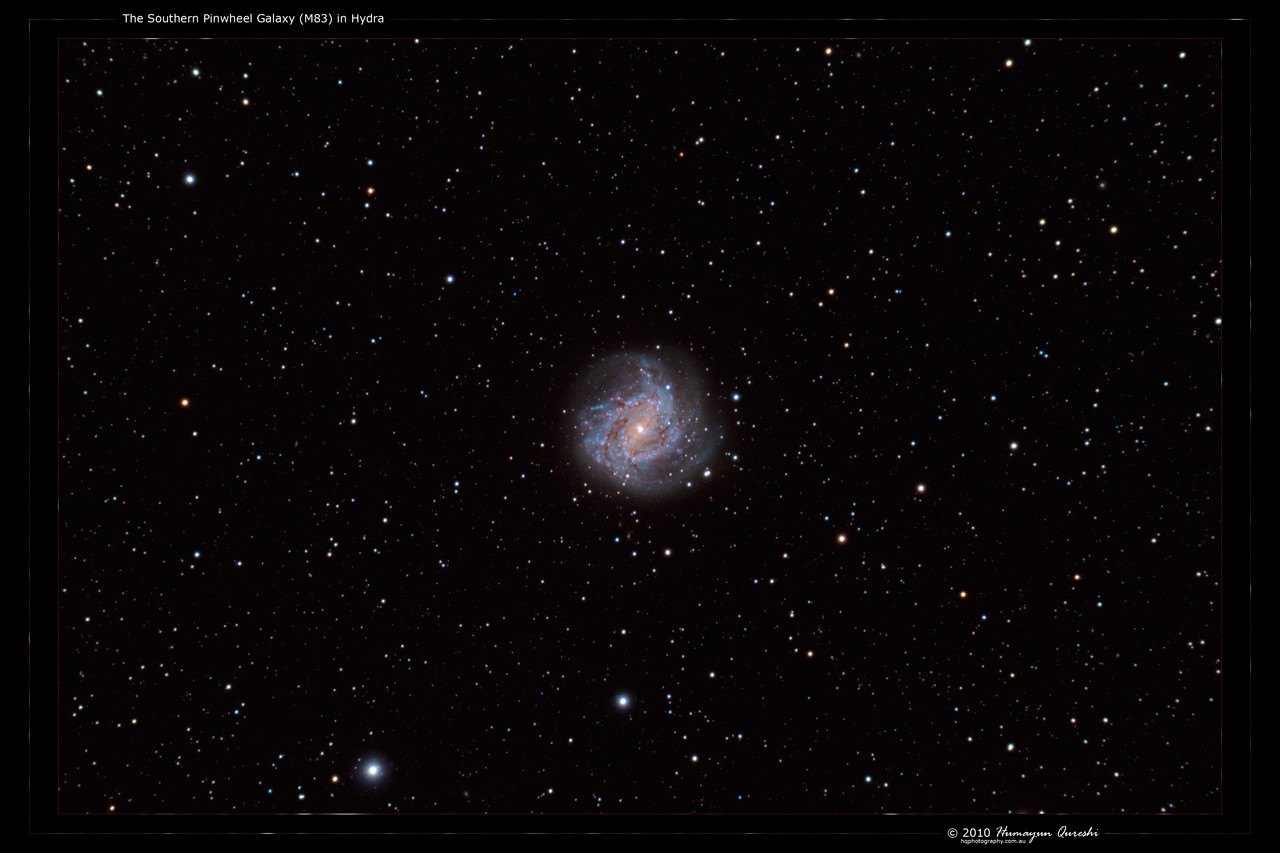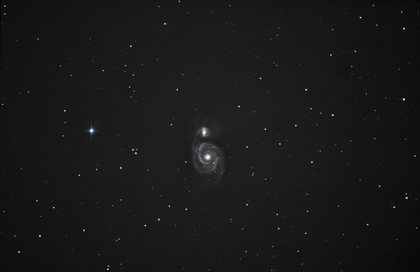HOME | DD
 octane2 — M83 in Hydra
octane2 — M83 in Hydra

Published: 2010-03-19 08:37:24 +0000 UTC; Views: 3097; Favourites: 95; Downloads: 115
Redirect to original
Description
The Southern Pinwheel Galaxy (M83) in HydraThis image has been the most fun to work on by far. It also represents my longest cumulative exposure of 4 hours and 10 minutes (25 x 600 seconds); this surpasses my Alnitak Region in Orion image by a mere 10 minutes. Capturing copious amounts of data allows greater post-processing flexibility and also smooths the sky background to oblivion.
M83 is a spiral galaxy in the constellation of Hydra. It's not the easiest of objects to find as it lies in a rather sparse region of the sky, situated in the longest constellation in the sky.
Binoculars show the Southern Pinwheel as a faint blurry patch. Using a telescope, you can make out faint spiral arms, dark lanes and a few bright knots. It is best observed with medium to high power magnification.
M83 is another galaxy which is a member of the Centaurus group of galaxies, which is spearheaded by the magical Centaurus A galaxy.
Theory predicts that a galaxy the size of M83 should experience supernovae events approximately every 300 years, M83 has had 4 in just the last 80 years.
The Southern Pinwheel galaxy also holds the title for being the first galaxy discovered which lies outside our own Local Group.
This composite consists of one set of images; one set of 25 images taken at ISO-400.
Each individual image was a 600 second exposure.
IRIS was used to calibrate each image (dark subtraction [median combined master dark] and flat field division [median combined master flat {lights and darks}]), to register, align, stack, and stretch.
Photoshop CS4 was used to adjust levels, curves, saturation, colour balance, local contrast, miscellaneous editing, frame and resize the final composite.
Target: The Southern Pinwheel Galaxy (M83) in Hydra
Date: Saturday, March 13th, 2010
Time: First image: 11:42 PM
Time: Last image: 05:57 AM
Location: Snake Valley, VIC, Australia
Camera: Canon EOS-40D (modified: Baader UV/IR filter)
Telescope: ED127 triplet APO refractor f/7.5
Focal length: 952mm
Mount: Losmandy G-11 (Gemini)
Guiding: Meade DSI-C through Orion ED80
Exposure: 25 x 600 seconds 4 hours 10 minutes) @ ISO-400 (RAW)
Software: IRIS: Calibration, registration, stacking, stretching; Adobe Photoshop CS4: post-processing and framing
Related content
Comments: 11

A great achievement well worth the effort and time spent in snake valley. You were running on high octane that night.
👍: 0 ⏩: 0

Sparse is one of the first words that came to my mind. Compared with some of your other photos, it's amazing how few stars there are in this one. Still, it is an incredible view of the universe, it seems so unique compared with surrounding space.
👍: 0 ⏩: 0

I hate you.
This is a great photo
I've looked at the others you've taken.
Cool set
👍: 0 ⏩: 0

This galaxy is really beautiful. Unfortunately she is too low on the horizon seen from France. One of my best souvenir from La Palma island when I saw it through my 250mm scopes.
You've done a great job here.
👍: 0 ⏩: 0
































